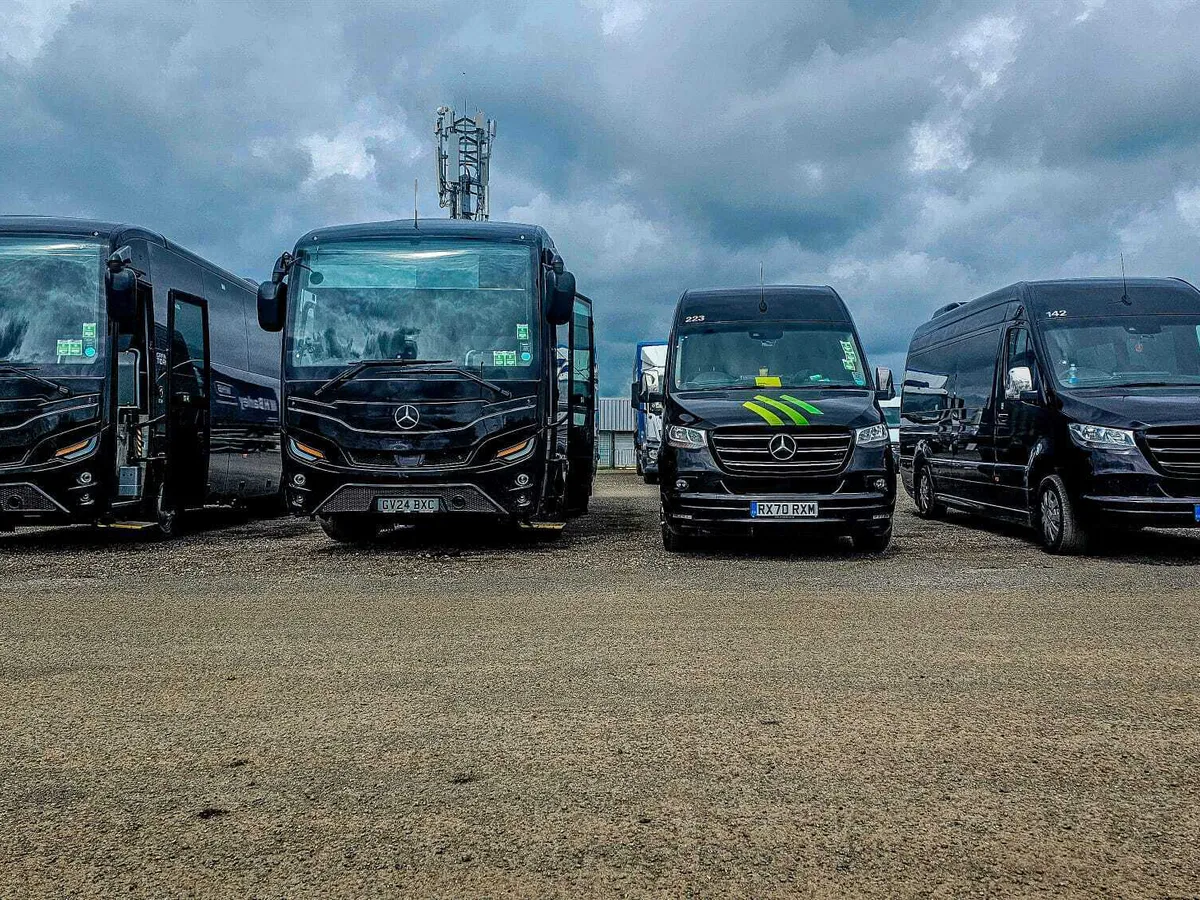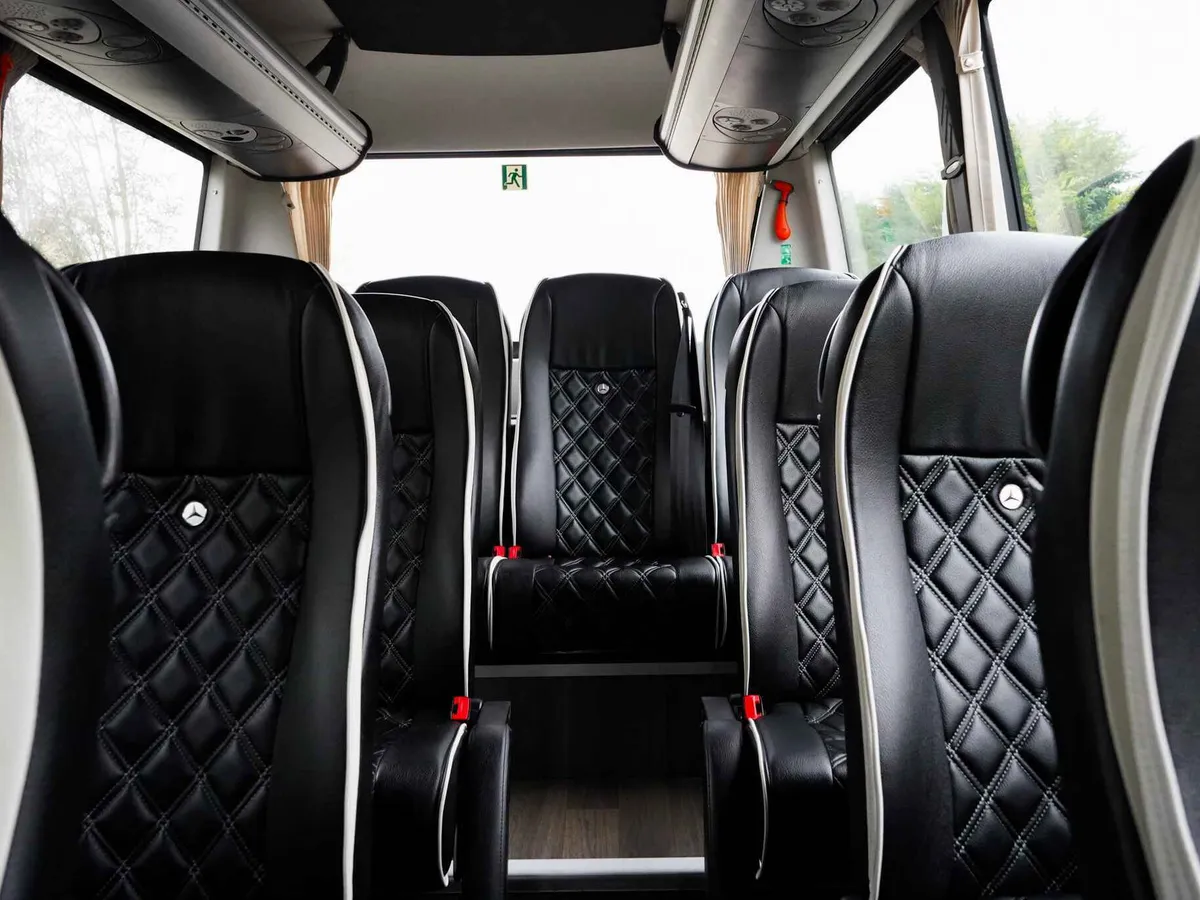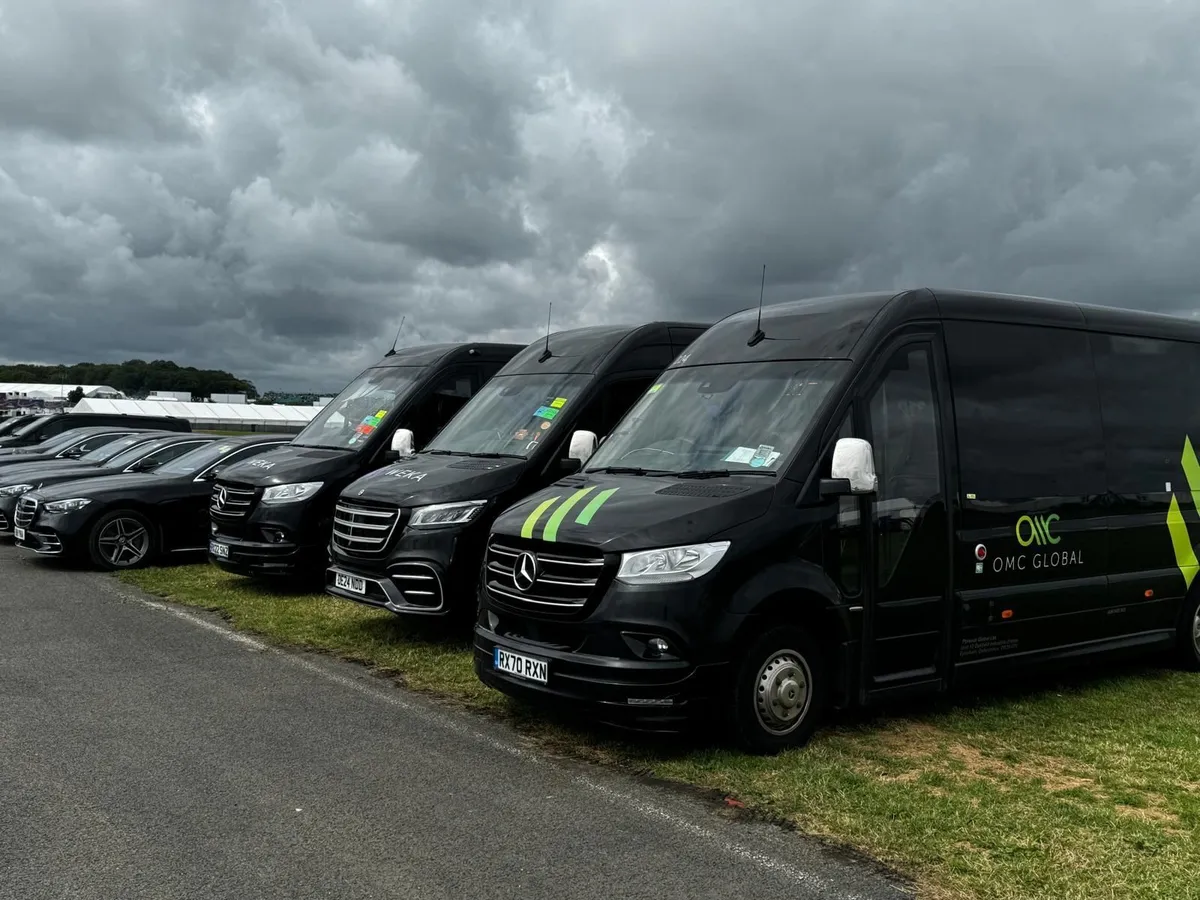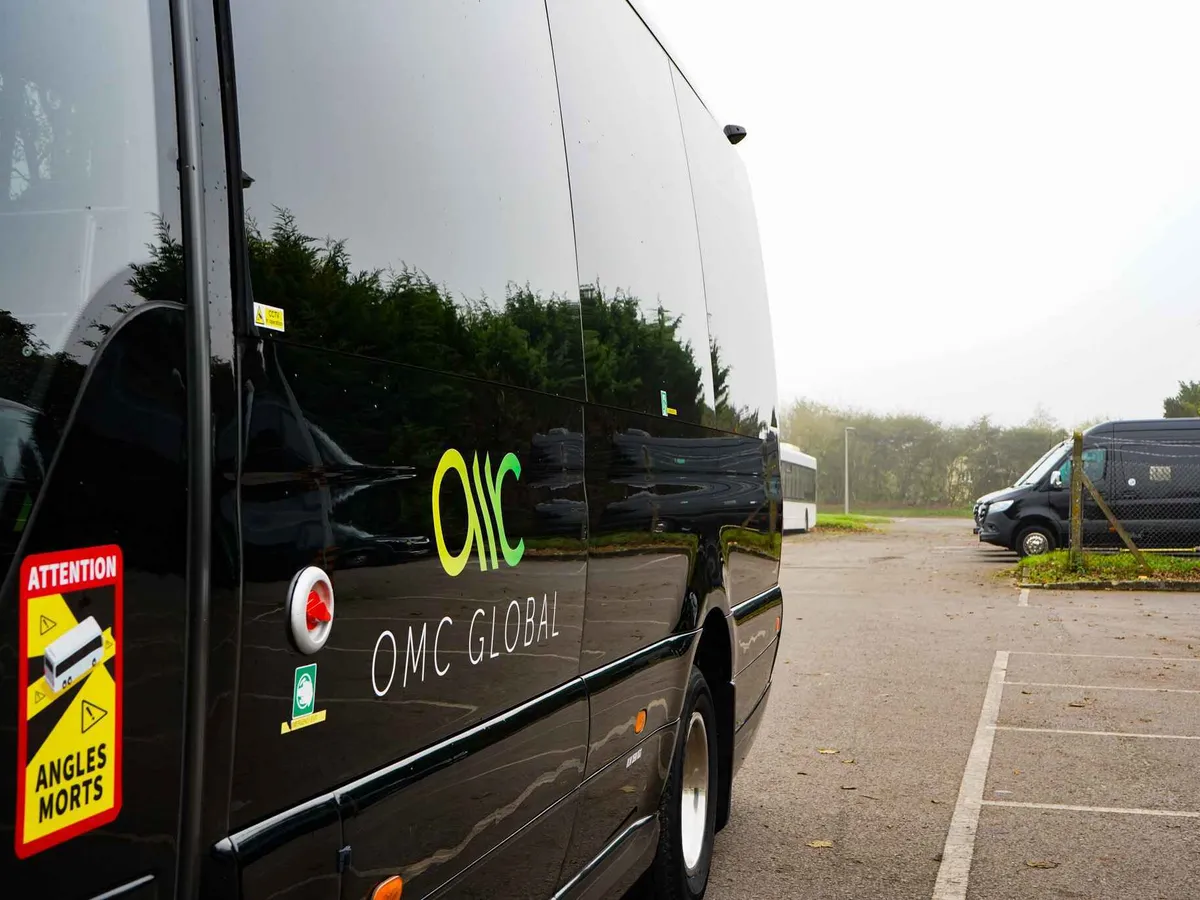Hiring One Large Coach vs. Two Small Minibuses - What’s Cheaper


When planning transportation for a group event be it a wedding, corporate retreat, school trip, or a family reunion, choosing between one large coach or two smaller minibuses can significantly influence costs and logistics. While the goal might seem as simple as moving people from point A to point B, the decision you make depends on numerous factors like budget constraints, group size, and travel requirements.
To help you make the right call, we’ve broken down the differences in terms of costs, fuel efficiency, seating capacity, flexibility, and more.
By examining both options, this guide aims to give you a clear sense of which works better for different situations, and, most importantly, which option is generally more cost-effective.

To weigh the advantages of hiring a large coach versus two minibuses, it’s essential to evaluate each option across several factors:
The first and most noticeable cost in hiring any vehicle is the actual rental price. Typically, large coaches have a higher rental fee compared to smaller minibuses. However, when you add up the cost of hiring two minibuses instead of one coach, the combined expense often exceeds that of the single larger vehicle. Here's why:
A traditional coach, seating anywhere from 50 to 70 passengers, usually comes with a flat fee for the rental. Depending on the region and specific service provider, the cost for a day's hire can range widely, but it typically settles around $500 to $800 per day for shorter, local trips.
Minibuses, often seating 15 to 20 passengers each, may look cost-effective up front. A single minibus typically costs $250 to $400 per day. However, if you're hiring two of them, the combined rental cost easily falls between $500 to $800—matching or even exceeding the cost of the larger coach.
Fuel expenses make up a considerable portion of travel costs, and this is where larger coaches tend to shine in terms of cost efficiency. Here's why:
While they consume more fuel per mile, a single large coach is ultimately more fuel-efficient per passenger. With capacity for 50+ passengers, the fuel usage is spread across a larger number of people. Averaging 8 to 12 miles per gallon, the cost per person per mile is often lower than minibuses.
Minibuses are smaller and lighter, consuming less fuel individually. However, with an average of 15–22 miles per gallon, the combined fuel cost of two vehicles often overshadows the efficiency benefits. Simply put, running two engines instead of one racks up higher fuel consumption.

The choice between a coach and minibuses often depends on how large your group is and how much space they require:
Coaches are designed to transport medium to large-sized groups, accommodating up to 70 passengers in one trip. This makes it highly suitable for larger gatherings where keeping everyone together is a priority.
Minibuses can seat 15 to 20 passengers each. While they’re sufficient for smaller groups, splitting a large group across two vehicles can cause logistical inconveniences (discussed later). Furthermore, if your group exceeds 40 passengers, you may need to hire three minibuses, further increasing costs.
Flexibility often comes at a premium in group transportation, and this is where minibuses have a distinct advantage over large coaches:
Two minibuses can operate independently, offering more versatility for split itineraries. For example, if part of your group needs to depart or arrive earlier, minibuses can accommodate these schedule differences. Thanks to their compact size, minibuses are easier to handle on narrow roads and busy routes, particularly around Gatwick and nearby areas where gatwick minibus hire service offer a convenient travel solution.
A coach keeps the entire group together, eliminating the need for extra planning to synchronize multiple vehicles. It typically has amenities like onboard bathrooms, entertainment systems, and larger luggage areas, which are often lacking in minibuses. However, navigating a large coach can be restrictive in small towns or locations with limited parking.
Driver wages and associated costs (e.g., tips) are another key consideration:
Hiring a large coach requires only one professional driver, which simplifies staffing costs. Depending on the provider, this fee is often included in the rental price.
On the other hand, two separate minibuses mean hiring two drivers, effectively doubling the cost here. This additional expense can make minibuses less appealing in terms of overall affordability.
With increasing emphasis on sustainability, it’s responsible to consider the environmental implications of your transportation options:
Carbon emissions tend to be lower when calculated per passenger with a fully occupied large coach. Consolidating people into a single vehicle means fewer emissions overall, making this a more eco-friendly choice.
The smaller size and independent operation of two minibuses result in higher emissions overall compared to one large coach. Combining the environmental footprint of two vehicles amplifies this effect, particularly over long distances.

While costs are a significant factor, practical needs and circumstances often swing the decision in favor of one option over the other. Here are some scenarios to illustrate when each transportation option might be the better choice:
When it comes to affordability, the decision really hinges on your group size and trip logistics. However, as a general rule:
Aside from cost, consider the nature of your trip and the flexibility you need. While a coach is ideal for straightforward journeys with minimal stops, minibuses provide flexibility and adaptability in more complex travel situations.

Choosing between one large coach and two small minibuses isn’t just about the price it’s about selecting the option that truly fits your group’s needs. For the most cost-effective solution, consider your group size, travel distance, and priorities such as convenience and eco-friendliness. By evaluating these factors, you can ensure your choice delivers both value and peace of mind.
At OMC Global, we provide luxury coaches and minibuses from Oxford to anywhere in the UK, ensuring your group travel is smooth, enjoyable, and budget-friendly.